Having trouble locking your pocket door without a lock? Fear not! With the right knowledge and materials, you can easily fix this age-old problem. In this blog post, we will explain how to safely secure a pocket door from unauthorized access without actually purchasing a full-fledged locking mechanism.
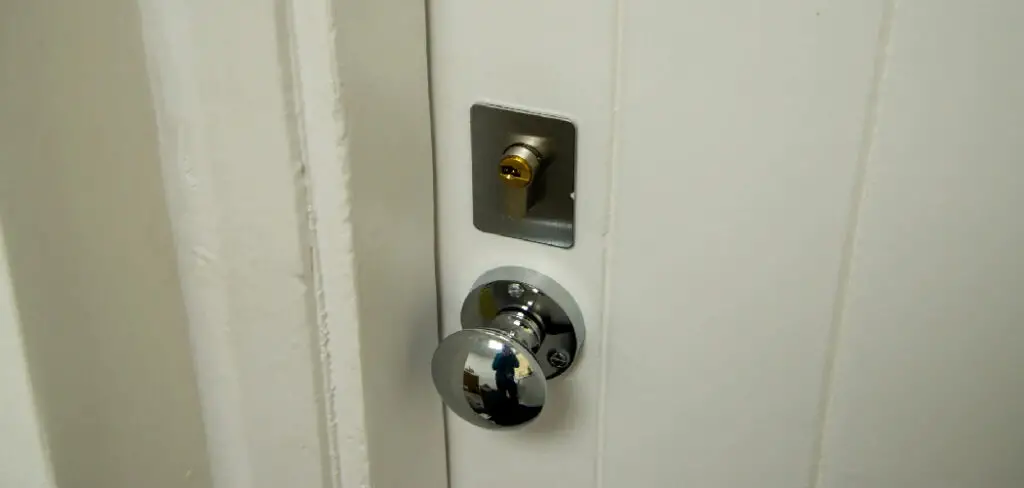
We’ll provide step by step instructions along with plenty of useful tips that will make this home improvement project easy for anyone who is looking for an effective way to keep their doors closed tight at all times. Keep reading to discover our must-have pointers on how to lock a pocket door without a lock!
If you’re looking for ways to secure your pocket door, you have come to the right place. Whether it’s an internal space like a bathroom or a bedroom that needs some extra privacy, locking a pocket door without any additional hardware can be easier than you think. In this post, we’ll show you how to use everyday items and crafty techniques for providing necessary security for your pocket door—all without needing to purchase or install expensive locks.
Why May You Need to Lock a Pocket Door Without a Lock?
There are many reasons why you may want to lock a pocket door without a lock. Such as:
1. Additional Layer of Security
One of the most common reasons for wanting to secure a pocket door is to provide an additional layer of security. Pocket doors are often found in bedrooms or bathrooms and can be easily accessed from either side, making them vulnerable to intruders. Adding a lock can help ensure that your home is protected by an extra layer of security.
2. Child Safety
Pocket doors can also be a safety concern for young children. Without a lock, they can easily open the door and become trapped in the room, or wander off into other areas of the home. By adding a lock to your pocket door, you can help keep kids safe and secure.
3. Privacy
Finally, another common reason for wanting to lock a pocket door is for privacy. Pocket doors can be used to separate two rooms, and locking them provides an extra layer of privacy. This can be especially helpful in shared living spaces, such as dorms or apartments, where more than one person may need access to the same room.
11 Ideas on How to Lock a Pocket Door Without a Lock
Now that you understand why it might be necessary to lock a pocket door without a lock, let’s look at some of the most effective ways to do so.
1. Use a Door Jammer
One of the easiest and most cost-effective methods for locking a pocket door is by using a door jammer. Door jammers are small devices that fit between the floor and the doorframe, preventing it from being opened.
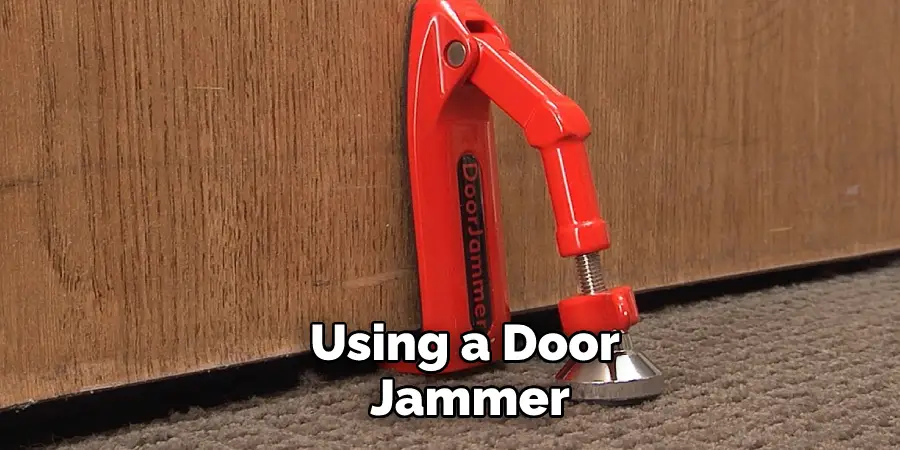
2. Use a Door Wedge
Door wedges are similar to door jammers in that they fit between the floor and the doorframe, blocking the pocket door from being opened completely. However, unlike a door jammer, a wedge is less secure and may not prevent break-ins.
3. Use a Door Bar
Door bars are metal bars that lock onto the top of the pocket door and keep it from opening completely. Door bars are often made of steel or aluminum and provide added security to a pocket door.
4. Use a Security Chain
Security chains are similar to door bars, but they are smaller and can be attached directly to the pocket door. They provide an added layer of security by keeping the pocket door from opening more than a few inches.
5. Use a Sliding Bolt Lock
Sliding bolt locks are locks that fit into the side or top of the pocket door frame and can be used to secure the pocket door in place. However, they are not recommended for use on exterior doors as they may not provide enough security.
6. Use a Door Chain
Door chains fit onto the top of the pocket door and allow you to open the door a few inches while still keeping it securely locked. It’s important to make sure the chain is long enough so that it can be secured in place when the door is open.
7. Use a Door Guard
Door guards are metal bars or plates that fit onto the top of the pocket door and make it difficult for someone to break into your home. However, they do not provide as much security as a traditional lock and can be easily bypassed with the right tools.
8. Use a Door Latch
Door latches are small pieces of metal that fit onto the side or top of the pocket door frame to secure it in place. While they may not provide as much security as traditional locks, they are better than no lock at all.
9. Use a Padlock
Padlocks can be used to secure pocket doors as long as the padlock is properly installed. However, it’s important to make sure that the padlock is strong enough so that it won’t easily be broken or picked.
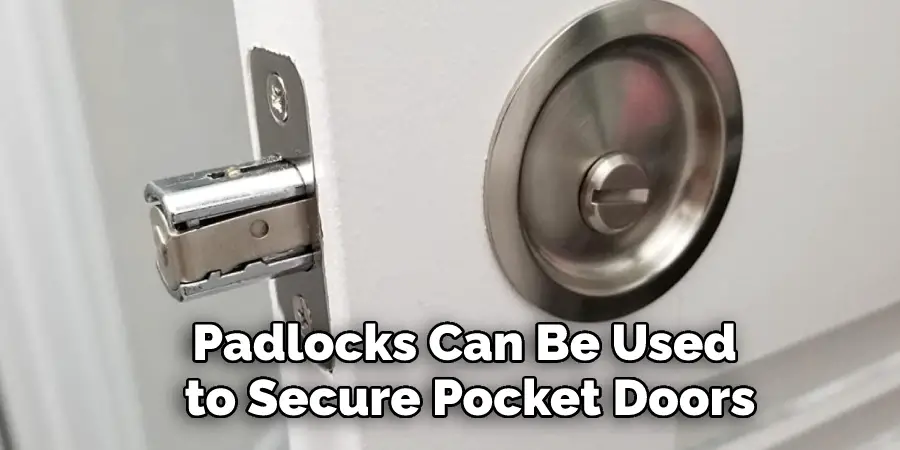
10. Use a Hasp Lock
Hasp locks are similar to padlocks, but they require two pieces of metal to be secured together in order to lock the pocket door in place. They provide an added layer of security and can be used on exterior doors as well as interior ones.
No matter what method you choose to lock your pocket door, it’s important to be aware of the potential risks and take all necessary precautions to ensure that your home is secure. Taking the time to properly install locks on interior and exterior doors can help protect your home from unwanted intruders. With the right security measures in place, you can rest assured knowing that your home is safe and secure.
11. Use a Floor Barricade
If you’re looking for a way to lock a pocket door without having to install a lock, then trying a floor barricade may be your best solution. A floor barricade usually consists of an anchoring bar that is mounted at the foot of the door closest to the frame and can be blocked or closed with a rubber stopper.
This provides additional security, as it prevents someone from simply pushing or sliding the pocket door open from the outside. In addition, it can also prevent children from accessing dangerous areas if used correctly.
Using a floor barricade is an effective way to help secure your pocket doors without needing to purchase and install locks, plus it’s relatively easy to set up.
Frequently Asked Questions
What Precautions Should I Take When Locking a Pocket Door?
When locking a pocket door, it’s important to make sure that the door is securely latched and that it’s in the closed position. You should also check to make sure that the latch mechanism is properly aligned and secured with screws, ensuring it won’t come loose over time. If you want to add an extra layer of security, you can install a deadbolt or other lock on the door.
What Is the Best Way to Secure a Pocket Door Without a Lock?
The best way to secure a pocket door without a lock is by using a sliding bolt or latch. Sliding bolts are inexpensive and easy to install, and they provide a secure locking mechanism. You can also use a keyed deadbolt or other lock if you want more security.
Additionally, installing door stops at the base of the door will prevent it from being opened too far and make it harder for someone to reach in and unlock it from the outside. Finally, adding screws or adhesive strips to the door frame and jamb can help keep the door from being forced open.
What Are Some Other Ways to Make a Pocket Door More Secure?
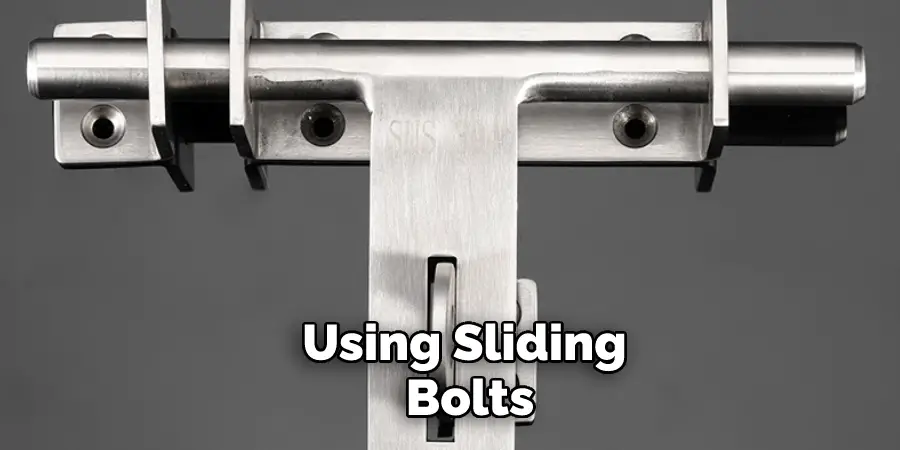
In addition to using sliding bolts, deadbolts, and door stops, there are several other ways you can make your pocket door more secure. You could replace the existing latch with one that is more secure, such as a mortise lock.
You could also install additional locks on the door itself, like keyed deadbolts or combination locks. Finally, if you want an extra layer of security, you could install a secondary locking device like a chain lock or guard. These devices are easy to install and provide an added measure of protection against intruders.
How Do I Know If My Pocket Door Is Securely Locked?
To check if your pocket door is securely locked, visually inspect the latch and make sure that it is firmly in place. If you are using a sliding bolt, deadbolt, or other lock, ensure that the mechanism is properly aligned and secured with screws.
You should also check the door frame and jamb to ensure that screws or other locking mechanisms have been installed properly. Additionally, if you are using a secondary locking device like a chain lock or guard, make sure it is functioning properly. Finally, take a look at the exterior side of the door to make sure that all locks and latches are securely engaged.
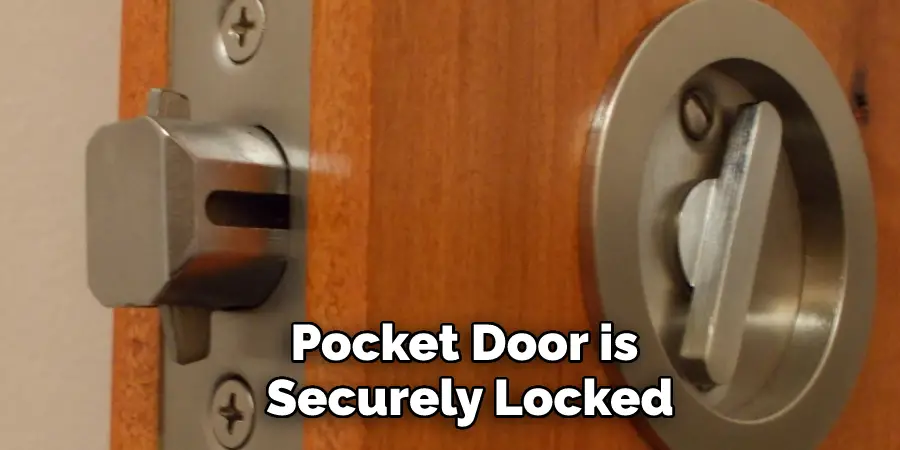
Conclusion
Locking a pocket door without a lock is an achievable task and if done correctly, it can be more secure than a standard pocket door lock. With these tips and tricks, you should be able to get your pocket doors locked in no time.
All that’s left to do is find the perfect lock for your décor or design needs and enjoy having extra security for your home. While there are other methods for pocket door locks, these are just a few of the easiest and most common ones available.
Whether you opt for traditional home remedies like adding fabric strips or decide to invest in specialty hardware pieces, having the ability to securely lock your pocket door will provide peace of mind knowing that you’re not leaving any room vulnerable.
We hope this guide on how to lock a pocket door without a lock has been helpful. Remember that the best way to secure your pocket door is by taking all necessary precautions and installing locks and other security devices on both the interior and exterior sides of the door. With these measures in place, you can rest assured knowing that your home is safe and secure.
